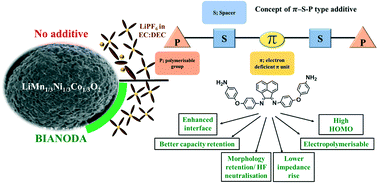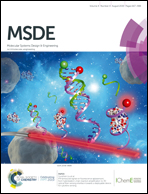Rational design of a BIAN-based multi-functional additive for higher durability and performance of LiMn1/3Ni1/3Co1/3O2 cathodes†
Abstract
The theoretical capacity and the potential limit of modern Li-ion batteries are hugely determined by the type of the cathode material utilized. With the emergence of 5 V cathode materials, the major problem severely affecting wide-scale commercial utilization is the stability of the commercially available LiPF6 in carbonates as the electrolyte. Problems such as electrolyte oxidation at a high potential, the formation of a surface reaction layer, and steadily increasing impedance upon storage are yet to be solved to realize their wide-scale applications. In this regard, a novel bisiminoacenaphthene-based functional polymerizable diamine was found to serve multiple purposes and was reported as an electrolyte additive. Apart from reducing irreversible electrolyte oxidation at a high potential, BIAN-based additives also aided in neutralizing the in situ-generated hydrofluoric acid (HF). The diimine unit could help adhere the electropolymerized product on to the surface of the metal oxides and provide a robust interface, thereby leading to performance enhancement.



 Please wait while we load your content...
Please wait while we load your content...
